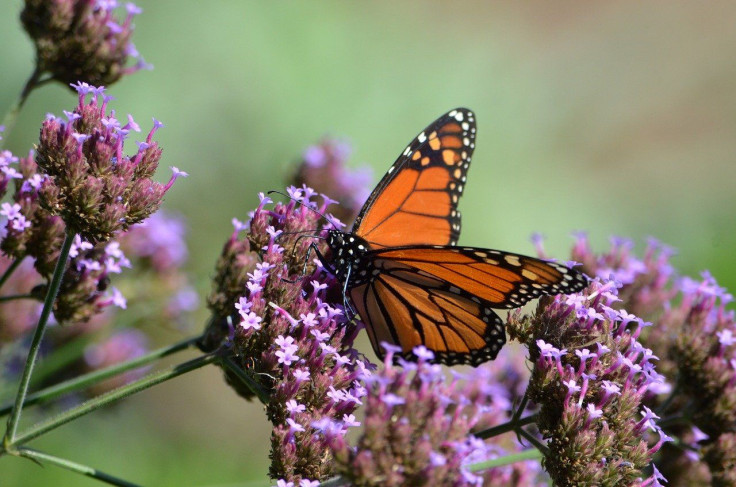Eastern Monarch Butterfly Population Up 35% But Still Facing Extinction

The Eastern monarch butterfly population has increased by 35%, according to a recent count. However, the iconic butterflies are still in the "extinction danger zone."
The eastern monarch butterflies covered 2.8 hectares (7 acres) of forest during winter 2021-22, the Xerces Society for Invertebrate Conservation said.
The count, which looks at the area occupied by the butterflies, showed a 35% increase compared to the 2.1 hectares recorded during the 2020-21 season. It also follows the 100-fold increase in this year's western monarch count, which actually accounts for the butterflies, showing a massive jump to 240,000 butterflies from the previous year's tally of just 2,000.
"This is great news and gives us some breathing room as we work to recover monarch numbers," Scott Hoffman Black, the executive director of the Xerces Society for Invertebrate Conservation, said in the organization's news release. "But there is still a long way to go to ensure that my grandchildren will be able to see monarchs every summer."
Indeed, while the numbers indicate an increase in the iconic butterflies' populations, it still doesn't take them out of the woods in terms of their extinction risk.
Scientists have noted six hectares to be the threshold that's necessary for the butterflies to get out of the "extinction danger zone" in North America, the Center for Biological Diversity noted. This means that the eastern monarchs' 2.84-hectare count is still well below what they need to thrive.
"Overall, eastern monarchs have declined by around 85% since the mid-1990s," the Center for Biological Diversity said.
Similarly, the western monarchs' recent massive increase, while impressive, is still said to be much smaller than in the 1980s, when millions of butterflies were observed in most years. Their population has also seen a dismal 95% decline since then, according to the Center for Biological Diversity.
Threats to monarch butterflies include climate change, pesticides and illegal logging at overwintering sites. They have also lost millions of acres of breeding habitat to development and herbicide spraying that eliminates milkweed, which is the only plant that monarch caterpillars eat.
While monarch butterflies are already considered a "species of special concern" in Mexico, they are still on the candidate waiting list for the Endangered Species Act.
"We petitioned for protection for monarchs eight years ago, but they still face an onslaught of pesticides and habitat loss," George Kimbrell of the Center for Food Safety said in the Center for Biological Diversity news release. "This year's count shows that they continue to urgently need Endangered Species Act protection. FWS (U.S. Fish and Wildlife Service) has already agreed to make a final decision; now they only need make the correct one, the one conservation, science and the law requires: protect monarchs."
For now, experts are urging people to be part of the movement to save the monarch butterflies.
"All people can help monarchs by planting native milkweed and other native flowers and eliminating insecticide use," Hoffman Black said. "If you can plant a home garden, if you can advocate for pollinator-friendly practices in your public parks, if you can restore monarch habitat on your farmland–then you can be part of the solution to save monarch butterflies from extinction."

Monarch butterflies migrate several thousand kilometers (miles) each year to Mexico fleeing the Canadian winter Photo: AFP / CLAUDIO CRUZ






